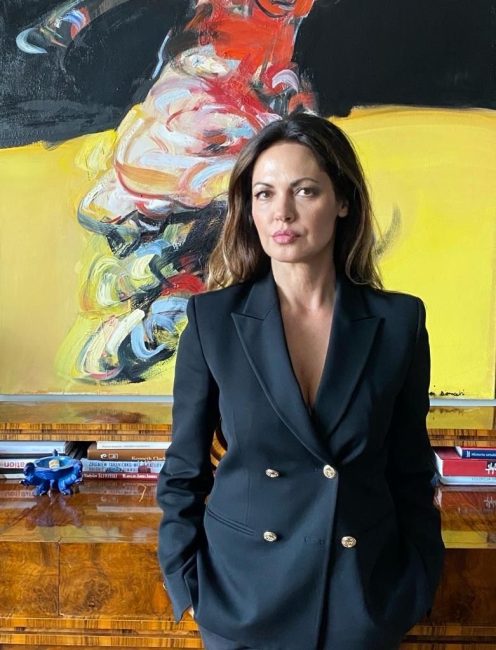Golden Cross of Merit
A Polish state award for distinguished contributions.
Professional market valuation
Exhibitions and curatorship
Discreet transactions
Art as an investment
Collection care
Art for clients
Art trading
Purchases and auctions
Art in interiors - hotels, residences, facilities
Artworks for spaces
Authenticity verification
Art leasing
Kiejstut Bereźnicki (b. 1935)
A master of classical form, melancholy, and metaphor. One of the last poets of figurative painting in Poland.
A Neotraditionalist Within the Realm of New Figuration
Bereźnicki was a student of the legendary Stanisław Teisseyre at the State Higher School of Fine Arts in Gdańsk. As early as the 1960s, he revealed himself as an artist with an exceptionally mature, narrative imagination.
Closely tied to Gdańsk for most of his life, he served as a professor and long-time rector of the Academy of Fine Arts. Hundreds of students passed through his studio, though few matched his expressive mastery.
Though he avoided the media spotlight, he had a profound influence on shaping the Polish school of figurative painting and, alongside Jerzy Nowosielski, stands as one of the leading representatives of neofiguration.
What Technique Does He Use? What Does He Focus On?
Classical technique – oil on canvas, drawing. He paints with deep respect for craftsmanship.
His work engages in a dialogue with 17th-century masters, yet in terms of iconography and composition, he developed a unique and recognizable poetic visual language – his own way of recording the world.
Themes? Still lifes, portraits, women, children, Passion scenes, biblical motifs. Never literal. These are psychological paintings, rich in symbolism, contemplation, and silence.
What Did He Hide? What Were His Secrets?
Bereźnicki often painted himself—not as a traditional self-portrait, but as a symbolic figure. He also painted his friends and often found inspiration in family photographs.
He believes that art should be intimate and indirect, and chooses painterly silence.
Why Is He Relevant Today? What Can Art Lovers Learn from Him?
Bereźnicki teaches humility toward the image. His art shows that you don’t need to shock to move someone. In the age of social media, his painting reminds us of the importance of slow, profound observation.
For collectors, he is a gem of the Polish figurative school—his works appear increasingly at auctions, and their value is rising as the art world shifts from conceptual trends back toward classical forms.
He is an artist whose work is like poetry: not to be consumed all at once, but in silence, piece by piece, with reverence.
Additional Insights
The artist uses a precise painting technique, clearly defining the objects and figures he depicts and flawlessly determining their spatial relationships.
“Just like with Nowosielski, Bereźnicki also created his own language for recording the world, and even if he wanted to, he likely couldn’t change it. It is like handwriting—tied to one’s personality—and as we know, a graphologist can read an individual’s traits from it.”
—Bożena Kowalska, Six Reflective Encounters with the Paintings of Kiejstut Bereźnicki
 Joanna Piotrowska - Art Advisor & Marszand
Joanna Piotrowska - Art Advisor & Marszand
Kiejstut Bereźnicki is a Polish painter, draftsman, and professor at the Academy of Fine Arts in Gdańsk. He studied painting there and has led a diploma atelier since 1982. His works are rooted in figurative art influenced by European artistic traditions.
Born in Poznań in 1935, Bereźnicki graduated from the Faculty of Painting at the State Higher School of Fine Arts in Gdańsk in 1958 under Professor Stanisław Teisseyre.
He has been employed at the Gdańsk Academy of Fine Arts since 1960, leading a diploma atelier from 1982. He served as Prorector from 1981 to 1984, became extraordinary professor in 1984 and full professor in 1994.
Bereźnicki has held numerous exhibitions in Poland and abroad, featuring painting and drawing. His art is figurative and deeply connected to European traditions. He was commemorated in a painting by Maciej Świeszewski.
His works are held in many national Polish museums including Warsaw, Kraków, Gdańsk, Poznań, Wrocław, and Szczecin, as well as in international collections in Paris, Bochum, Skopje, Sofia, and private collections worldwide.
Polish
Draftsman, drawing, Painter, professor
figurative painting connected to European tradition, drawing, contemporary art
A Polish state award for distinguished contributions.
Awarded for contributions to the culture and community of the Gdańsk region.
A high Polish state order for outstanding achievements.
Medal for Merit to Culture awarded by the Polish Ministry of Culture.

